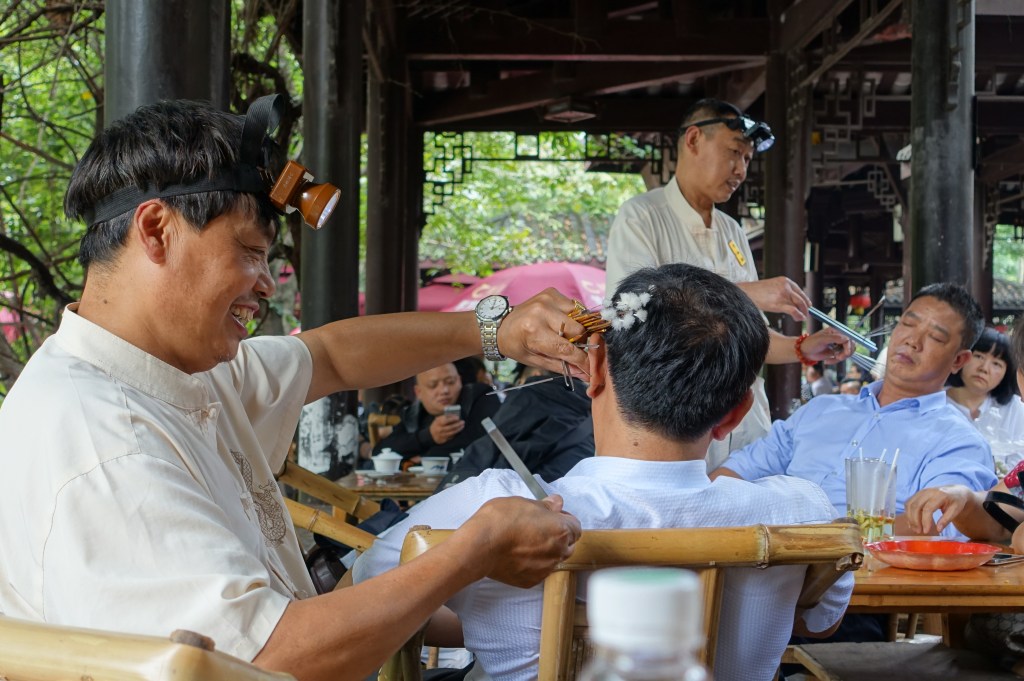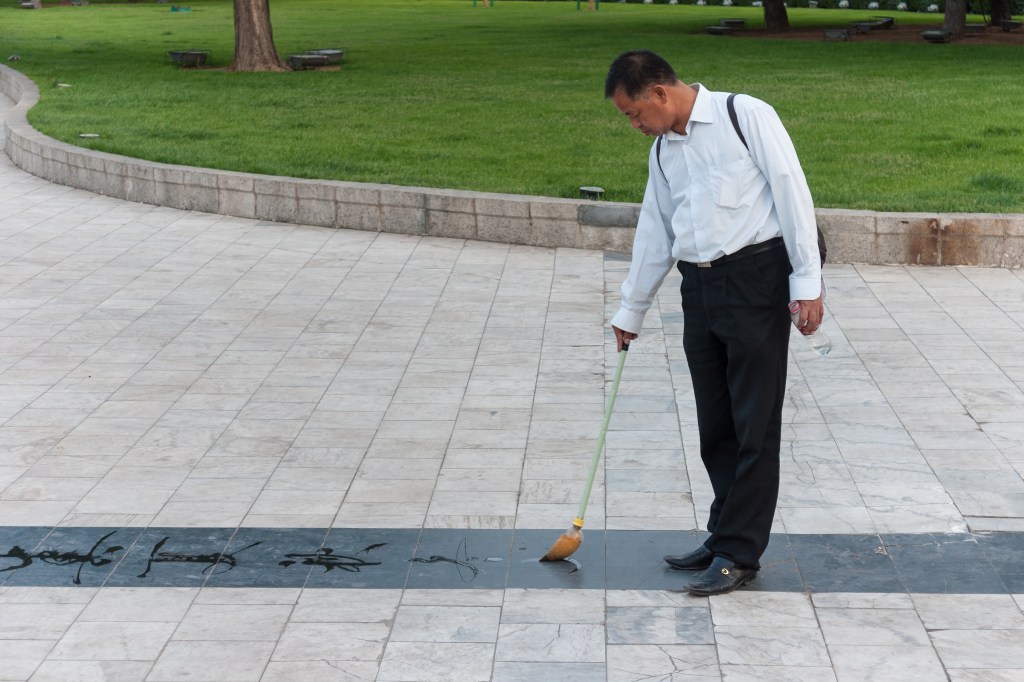An old man had fallen asleep in his chair. His head lolled back, his mouth hung open. Another peered at a newspaper. A group in their twenties were lost in their smartphones. There was a click of mahjong tiles, the slapping of cards onto tables. The ear-cleaner walked round with a fistful of diabolical tools. He clanged them together in terrorem. A masseur gave a treatment which involved the techniques that school bullies use to make other children cry.
The chairs were fashioned from bamboo, the tops of the tables were battered. They were laid out under parasols, themselves under a canopy of trees. But shade is seldom needed in Chengdu. You are, as the saying goes, more likely to see a teahouse than a sunny day.

Teahouses are an ancient institution in Sichuan Province. They have been around since the Tang Dynasty (618-907 CE). By the end of the nineteenth century, there was almost one for every street in Chengdu. They were always a lot more than somewhere to go to drink tea. Traders would do business from them. Gangsters would sell opium at them. People would go there to catch up on news and gossip.
The He Ming Teahouse on the lake in the People’s Park is over a century old. The name means ‘singing crane’. It is connected by a footbridge to the smaller Yongju Teahouse on Goldfish Island in the middle of the lake where there is a pond which teems with fish.
A stream leads from the lake along the top of the park to the Zhen Liu Teahouse, where I settled and ordered jasmine tea. The name in Chinese is bi tan piao xue, which I am told means ‘snowflakes floating on a green lake’.
The tea leaves came in a sachet with a cup with a lid and no handle and a large flask of hot water. There is an etiquette to drinking the tea. Some grasp the saucer with one hand, lift the lid with the other and use it to scoop away floating leaves. Others hold the cup by the rim with their thumb and middle finger and use the index finger to push aside the lid just far enough to let the tea flow while filtering out the leaves. I learned all that later, though.
Elsewhere in the People’s Park there are orchids and bonsai trees. There are paifang gates, pagodas and humpbacked bridges. There are caricaturists and fortune-tellers and musicians. There are strollers and joggers and groups doing tai chi or dancing to music. There is ballroom and fan dancing and something you might do in a class at the gym.
Old men practice water calligraphy. They describe the characters on paving stones with giant paintbrushes dipped in water. Couples rent boats and pootle about on the lake. People fly kites and play badminton with tennis balls and keepie-uppie with oversized shuttlecocks. The game and the shuttlecock are called jianzi.
Spin a wheel to determine which picture the vendor will recreate in caramel dribbled from a ladle and mount on a skewer. It might be a butterfly, a cockerel, a songbird, a dragonfly or a slightly incongruous strawberry. Watch other vendors make san da pao by tugging pieces from a big ball of sticky rice, shaping them into smaller balls and bouncing them – for some reason – off cymbals into a tub of sweet bean flour.
Both looked two sickly for me. I snacked instead on squid threaded onto skewers, sprinkled with chilli powder and grilled on a plancha.
I passed a few hours at the People’s Park. Locals will make a day of it if they can.
© Richard Senior 2021



